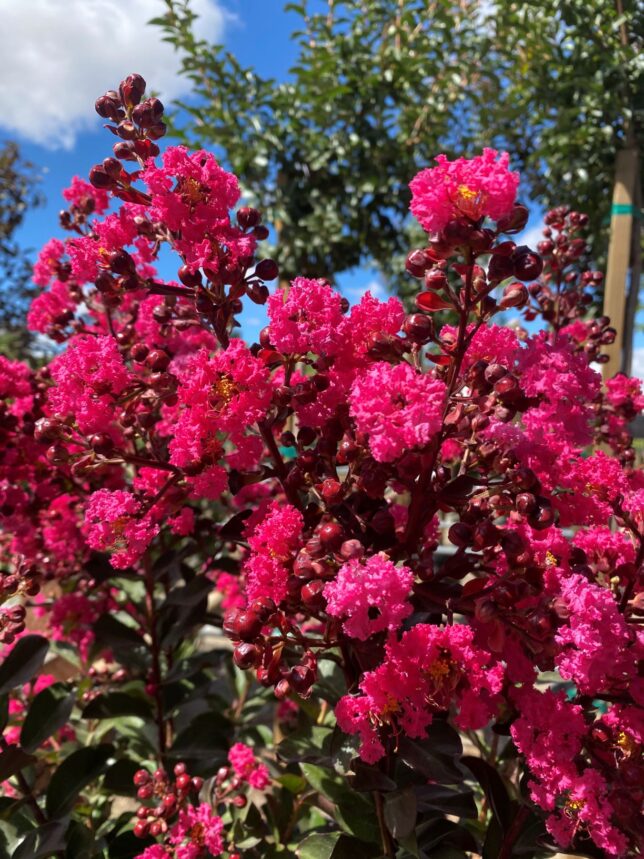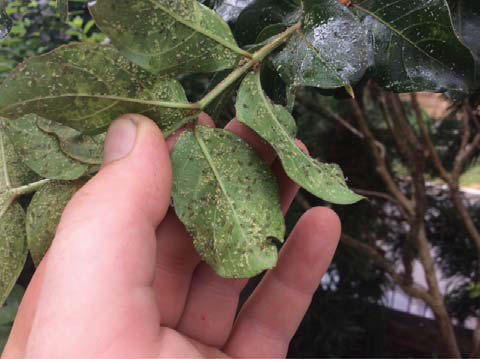
Crape myrtles are a favorite among local gardeners for their stunning blooms, water-wise habits and year-round interest. They can also host an unwanted aphid infestation.
Aphids are small, soft-bodied insects that feed on plant sap. Aphids are typically less than 1/8 inch long and are often green, yellow or brown. They have pear-shaped bodies with long antennae.
Aphids are usually found in clusters on the underside of new leaves or stems where they feed. Aphids are attracted to plants with new growth because they prefer to feed on young, tender plant tissue. Aphids feed by piercing plant tissues and sucking out the sap. This can cause leaves to curl, yellow, or drop prematurely.
You may also notice a sticky substance on the leaves or on the ground below the tree. This “honeydew” can attract ants which will then worsen the problem as they defend the aphids from predators.
Preventing aphids involves regular monitoring, promoting natural predators, and maintaining the overall health of your tree.

There are several approaches to fighting aphids on crape myrtle trees:
- The first line of defense is to blast them off with a stream of water daily
- Horticultural Oil or Neem Oil (only if less than 90 degrees)
- Spray with all-natural Take Down Garden Spray = oil + pyrethrin (fast kill of insects)
- Introduce natural enemies such as ladybugs
- Control the ant population
Any of these approaches may need to be repeated as aphids quickly reproduce.
Follow us in Social Media